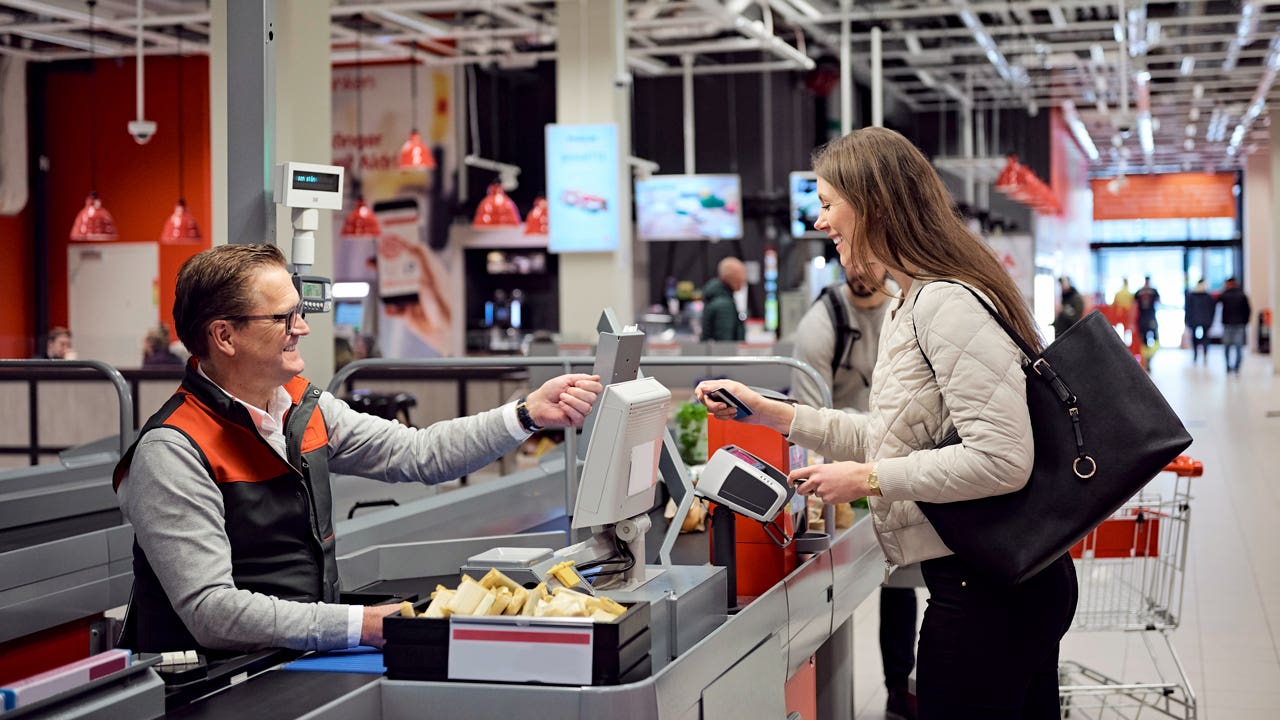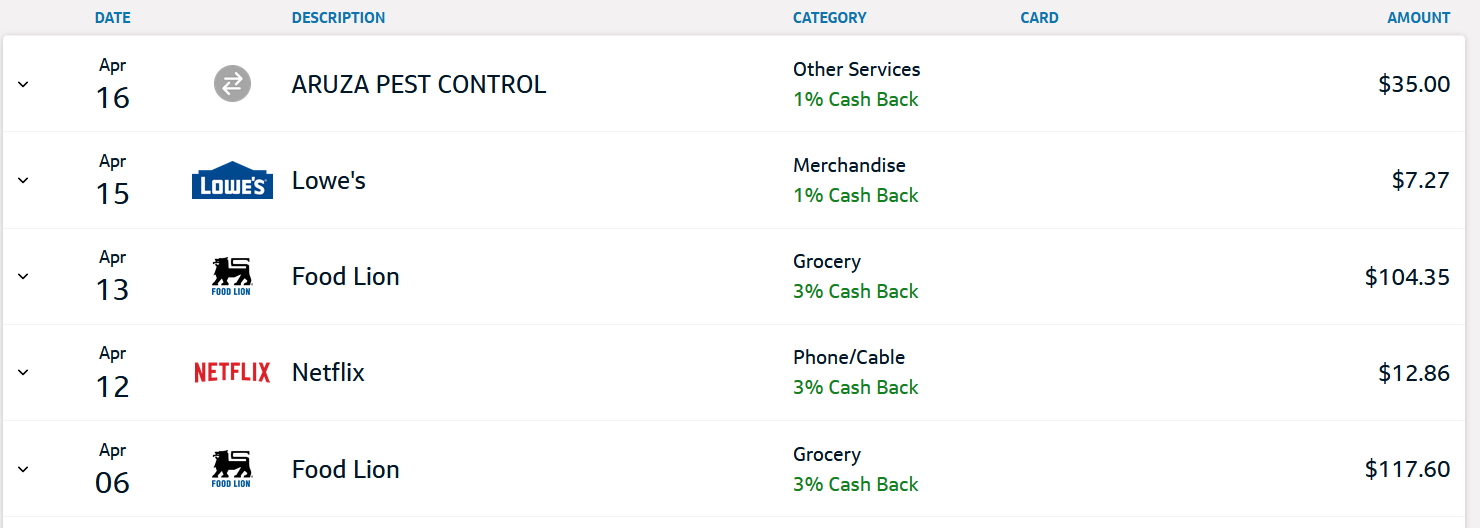Merchant category codes: How to earn more cash back

The Bankrate promise
At Bankrate we strive to help you make smarter financial decisions. While we adhere to strict , this post may contain references to products from our partners. Here's an explanation for . The content on this page is accurate as of the posting date; however, some of the offers mentioned may have expired. Terms apply to the offers listed on this page. Any opinions, analyses, reviews or recommendations expressed in this article are those of the author’s alone, and have not been reviewed, approved or otherwise endorsed by any card issuer.
Key takeaways
- While credit card issuers use merchant category codes to classify businesses, you may be able to leverage them to maximize your card's rewards.
- Knowing the MCCs of stores you frequent can help you find which stores will reward you the most on your purchases.
- Retailers can have different MCCs than others in the same chain — a potential "loophole" to earning points or miles on purchases that typically don't earn many rewards.
Digging into the inner workings of your credit card rewards might sound intimidating, but the extra elbow grease is worth it. For instance, exploring your card terms will reveal that you earn cash back based on the business’ merchant category code — or MCC.
This hidden knowledge can help you understand what makes your rewards program tick. Read on to learn the ins and outs of MCCs — and how you can use this knowledge to earn maximum rewards with your cash back credit card.
What is a merchant category code?
Merchant category codes are four-digit numbers that credit card networks — like Visa, Mastercard, American Express and Discover — use to classify businesses in order to track consumer spending. They collect this information to protect you from fraud, assign rewards and gather marketing data to fine-tune their products.
Here’s how you may see these categories appearing in your credit card account:

On the flip side, you can also use this information to your benefit. By analyzing your network’s merchant category code list prior to shopping, you can determine you’ll earn the most cash back according to your card’s bonus categories. Keep in mind that each network has its own specific merchant category code list and definitions for which purchases or retailers count.
Why didn’t I earn cash back on a purchase at a certain store?
Not earning elevated cash back on a purchase that you thought qualified in a bonus category typically boils down one of two things:
- Your rewards card’s bonus category definition
- Your network’s MCC classification
Some credit cards offer broader definitions for their bonus categories. For instance, the Chase Freedom Flex℠* occasionally offers online shopping rewards at specific retailers — such as Amazon.com, Walmart and PayPal purchases — based on its quarterly cash back calendar. Meanwhile, the Bank of America® Customized Cash Rewards credit card has an in-depth online shopping category that covers a broad array of merchants — from major retailers to specialty merchants like Etsy.com.
Another reason you may have missed out on bonus cash back is that the MCC didn’t correlate with the issuer’s bonus category. For example, standard Walmart locations are typically listed as MCC 5310 — or discount stores — while Walmart Supercenters are usually listed under Visa’s MCC 5411 — grocery stores and supermarkets. Similarly, many Costco fuel locations are listed as MCC 5542 — automated fuel dispensers — instead of MCC 5541 (like most traditional gas stations). Depending on your card, bonus category descriptions can void rewards on these purchases.
These annoying MCC differences develop because the store’s merchant category code is determined by the primary products it sells. Since Walmart doesn’t primarily sell supermarket produce, its MCC reflects that.
How to find a merchant category code
Finding a business’ merchant category code can be tricky depending on your network. Visa merchant category codes are generally easy to find since it’s the largest network. A quick Mastercard merchant category code lookup will also find you a list of Mastercard MCCs pretty easily.
However, some networks — like American Express and Discover — don’t make their code lists publicly available. In that case, your card issuer may provide a list of its network’s MCCs either online or by request, if you contact them.
If you don’t have a store’s exact MCC, it might take some trial and error to nail down which stores near you offer the best rewards. You can try making a small purchase on your card at the store you want to shop and check back on your next statement to see how much you earned in rewards.
Earning cash back with merchant category codes
Maximizing your cash back begins with knowing the MCCs of the merchants you shop with most frequently. To help you get started, we’ve collected a list of the most common bonus categories and compared them to the Visa and Mastercard merchant category codes. Keep in mind that some merchant brands have their own MCCs, especially when it comes to travel chains.
| Cash back category | Visa MCC | Mastercard MCC |
|---|---|---|
| Groceries/U.S. supermarkets |
|
|
| Wholesale clubs |
|
|
| Superstores/Big box stores (Walmart, Target, etc.) |
|
|
| Gas stations |
|
|
| Restaurants/dining |
|
|
| Entertainment | Very broad, but here are a few popular examples:
|
Very broad, but here are a few popular examples:
|
| Department stores |
|
|
| Online shopping |
|
These can vary depending on the merchant, but digital goods range from 5815 to 5818 |
| Drug stores |
|
|
| Home improvement |
|
|
| Travel | Very broad, but here are a few popular examples:
|
Very broad, but here are a few popular examples:
|
In the end, it is at the discretion of your card issuer which MCCs they will lump into your bonus category. Not all cards with a travel bonus will consider passenger railways, for instance.
How to maximize your cash back with merchant category codes
Now that you have a general understanding of bonus category codes, here are a few strategies to align your spending and maximize your rewards card’s cash back categories.
Know your favorite stores’ merchant category codes
The first step to optimizing your spending is to determine the MCCs of the stores you frequently shop at. Investing a little bit of time into finding the store that rewards you the most can deliver an excellent return with cash back.
During the process, you might find that some stores in the same chain may have different MCCs, depending on their primary inventory. Even different counters or sections in the same department store may carry different MCCs. You can use this to your advantage if you know one location near you will provide a better cash back rate than the other.
Keep your shopping within your best cash back category
It may take some extra work, but try doing most of your shopping at stores that are coded within your card’s largest cash back category.
For instance, the Blue Cash Preferred® Card from American Express earns 6 percent cash back on U.S. supermarket purchases (up to $6,000 per year, then 1 percent). However, if your supermarket allows you to purchase gift cards to other stores, you can use that to essentially earn 6 percent cash back at other retailers, too.
Get creative with your shopping
As mentioned, some store locations will have different MCCs than the others in the same chain — some of which may come as a nice surprise. These “loopholes” can provide great opportunities to reap cash back on purchases that typically wouldn’t earn elevated rewards.
For example, you may be able to find a retail store that codes as a drugstore purchase. This means the Chase Freedom Unlimited® may earn 3 percent cash back on what would normally be considered a discount or department store purchase. Simply check your rewards statement later to see if your creativity was rewarded or if the “loophole” was closed.
Frequently asked questions (FAQs)
-
Transaction category codes (TCCs) are used by some credit card networks to determine the currency amount that will be authorized for a purchase. A TCCs must be valid under the correct four-digit Merchant Category Code (MCC) for the transaction to be approved.
-
Merchant category codes (MCCs) are used by credit card companies to classify businesses, track consumer spending and allocate rewards. On the other hand, North American Industry Classification System (NAICS) codes are another way of classifying businesses. However, NAICS codes are used by federal agencies wishing to collect data and statistics about the U.S. economy.
-
If you believe you didn’t receive the amount of rewards you’re entitled to, be sure that you haven’t hit any annual or quarterly rewards caps placed by your issuer. You may also want to check that your purchase was not made with a third-party vendor, which may have caused it to code improperly. If you still believe you’re entitled to additional rewards, reach out to your credit card company for clarification.
The bottom line
Sifting through your credit card’s MCC classifications might sound overwhelming, but these valuable specifications can be worth their weight in cash back opportunities.
Once you understand your favorite stores’ MCCs, you can optimize your shopping list for cash back on purchases that normally wouldn’t earn anything more than the base cash back rate. With a little elbow grease and creativity, you’ll be laughing all the way to the bank.
*Information about the Chase Freedom Flex℠ has been collected independently by Bankrate. The card details have not been reviewed or approved by the card issuer. The Bank of America content in this post was last updated on April 22, 2024.
Related Articles



